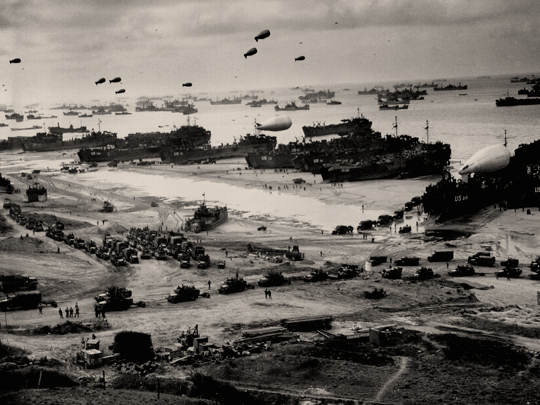Wikimedia Commons / CC-BY-SA-3.0 / GFDL
1 – Operation Neptune, D-Day
The Normandy D-Day landings, codenamed Operation Neptune, on 6 June 1944, was part of the Allied invasion of Normandy, codenamed Operation Overlord, during World War II.
The largest seaborne invasion in history, it began the liberation of German-occupied northwestern Europe as 150,000 Allied Expeditionary Forces landed in Normandy, France.
Planning for the operation began in 1943.
In the months leading up to the invasion, the Allies conducted a substantial military deception, codenamed Operation Bodyguard, to mislead the Germans as to the date and location of the main Allied landings.
The weather on D-Day was far from ideal, but postponing would have meant a delay of at least two weeks, as the invasion planners had requirements for the phase of the moon, the tides, and the time of day.
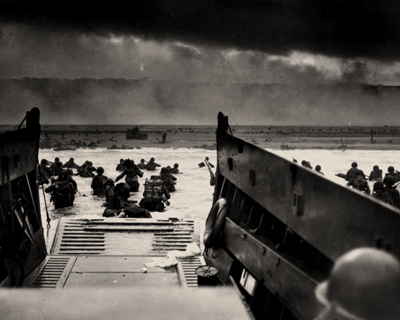
The amphibious landings were preceded by extensive aerial and naval bombardment and an airborne assault—the landing of 24,000 American, British, and Canadian airborne troops shortly after midnight.
The target 50-mile (80 km) stretch of the Normandy coast was divided into five sectors: Utah, Omaha, Gold, Juno, and Sword Beach.
The men landed under heavy fire from gun emplacements overlooking the beaches, and the shore was mined and covered with obstacles such as wooden stakes, metal tripods, and barbed wire, making the work of the beach-clearing teams difficult and dangerous.
Casualties were heaviest at Omaha, with its high cliffs.
The Allies failed to achieve any of their goals on the first day. Carentan, St. Lô, and Bayeux remained in German hands, and Caen, a major objective, was not captured until 21 July.
Only two of the beaches (Juno and Gold) were linked on the first day, and all five beachheads were not connected until 12 June.
German casualties on D-Day have been estimated between 4,000 to 9,000 men. Allied casualties were at least 10,000, with 4,414 confirmed dead.
2 – The Battle of the Bulge
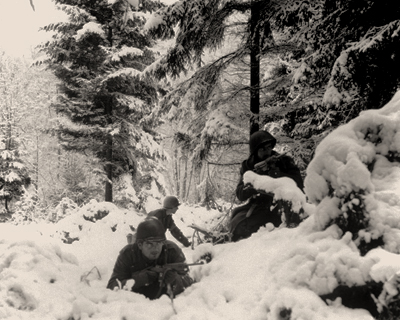
The Battle of the Bulge took place between 16 December 1944 – 25 January 1945.
It was a major German offensive campaign launched through the densely forested Ardennes region of Wallonia in Belgium, France, and Luxembourg on the Western Front of World War II.
The surprise attack caught the Allied forces completely off guard. American forces bore the brunt of the attack and incurred their highest casualties for any operation during the war.
The battle also severely depleted Germany’s armored forces on the Western Front, while German personnel and Luftwaffe aircraft also sustained heavy losses.
Different forces referred to the battle by different names. The Allies called it the Ardennes Counteroffensive.
The phrase “Battle of the Bulge” was coined by contemporary press to describe the way the Allied front line bulged inward on wartime news maps and became the most widely used name for the battle.
The German offensive operations were intended to split the Allied line in half, so the Germans could then encircle and destroy the four Allied armies, forcing the Western Allies to negotiate a peace treaty in the Axis powers’ favor.
Once that was accomplished, Hitler could fully concentrate on the Soviets on the Eastern Front. However, fierce Allied resistance blocked German access to key roads to the northwest and west that they counted on for success.
Columns of armor and infantry that were supposed to advance along parallel routes found themselves on the same roads.
This and terrain that favored the defenders threw the German advance behind schedule and allowed the Allies to reinforce the thinly placed troops.
Improved weather conditions permitted aerial attacks on German forces and supply lines, sealing the failure of the offensive. Between 67,200 and 125,000 German troops were killed or wounded.
While 89,000 of the 610,000 Americans involved in the battle, were killed or wounded. It was the largest and bloodiest battle fought by the United States in World War II.
3 – Paris is Liberated
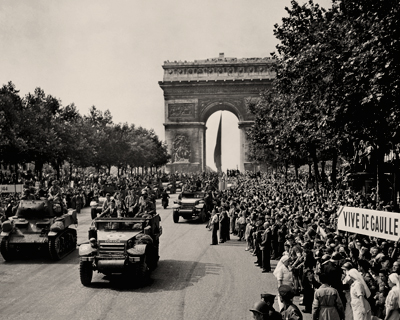
The Liberation of Paris was a military action that took place during World War II from 19 August to 25 August 1944, when the German garrison surrendered the French capital.
Paris had been ruled by Nazi Germany since the signing of the Second Compiègne Armistice on 22 June 1940, after which the Wehrmacht occupied northern and western France.
The liberation began when the French Forces of the Interior, the military structure of the French Resistance, staged an uprising against the German garrison upon the approach of General Patton’s US Third Army.
On the morning of August 25th, the bulk of the 2nd Armored Division and US 4th Infantry Division entered the city.
Dietrich von Choltitz, commander of the German garrison and the military governor of Paris, surrendered to the French at the Hôtel Meurice, the newly established French headquarters.
General Charles de Gaulle arrived to assume control of the city as head of the Provisional Government of the French Republic.
4 – Hitler Survives Assassination Attempt
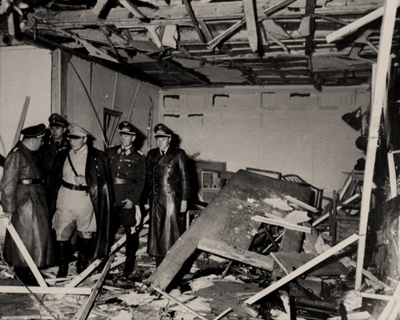
On 20 July 1944, an attempt was made to assassinate Adolf Hitler, perpetrated by Claus von Stauffenberg and other conspirators, inside his Wolf’s Lair field headquarters near Rastenburg, East Prussia.
The name Operation Valkyrie, originally referring to a part of the conspiracy, has become associated with the entire event.
The apparent purpose of the assassination attempt was to seize political control of Germany and its armed forces from the Nazi Party and to make peace with the western Allies as soon as possible.
The underlying desire of many of the involved high ranking Wehrmacht officers was apparently to show to the world that not all Germans were like Hitler and the Nazi Party.
The details of the conspirators’ peace initiatives remain unknown, but they likely would have included demands to accept wide-reaching territorial annexations by Germany in Europe.
The plot was the culmination of the efforts by several groups in the German Resistance to overthrow the Nazi German government.
The failure of the assassination and the military coup d’état which was planned to follow, led to the arrest of at least 7,000 people by the Gestapo.
According to records of the Führer Conferences on Naval Affairs, 4,980 of these were executed.
5 – Operation Market Garden
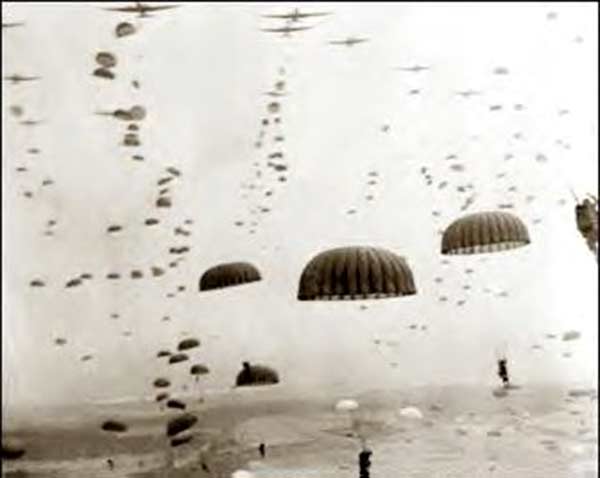
Operation Market Garden, 17–25 September 1944, was an unsuccessful Allied military operation, fought in the Netherlands and Germany in World War II. The operation was split into two sub-operations:
- Market – the airborne forces, who would seize bridges
- Garden – the ground forces, consisting of the British XXX Corps
The aim of Operation Market Garden was to establish the northern end of a pincer ready to project deeper into Germany and to encircle the heart of German industry, the Ruhr.
Allied forces would project north from Belgium, 97 km through the Netherlands, across the Rhine and consolidate north of Arnhem on the Dutch/German border ready to close the pincer.
The operation required the seizure of the bridges across the Meuse River, two arms of the Rhine, the Waal and the Lower Rhine, together with crossings over several smaller canals and tributaries.
Several bridges between Eindhoven and Nijmegen were captured at the beginning of the operation. German forces demolished the bridge at Son before being secured by the 101st Airborne Division.
The 82nd Airborne Division’s failure to capture the main road bridge over the river Waal at Nijmegen before 20 September also delayed the advance of XXX Corps.
At the furthest point of the operation at Arnhem, the British 1st Airborne Division encountered strong resistance.
In the ensuing battle, only a small force managed to capture the north end of the Arnhem road bridge and after the ground forces failed to relieve them, the paratroopers were overrun on 21 September.
The remaining troops had to be evacuated on 25 September.
The Allies had failed to cross the Rhine and the river remained a barrier to their advance into Germany until offensives at Remagen, Oppenheim, Rees, and Wesel in March 1945.
The failure of Market Garden to form a foothold over the Rhine ended Allied expectations of finishing the war by Christmas 1944.


